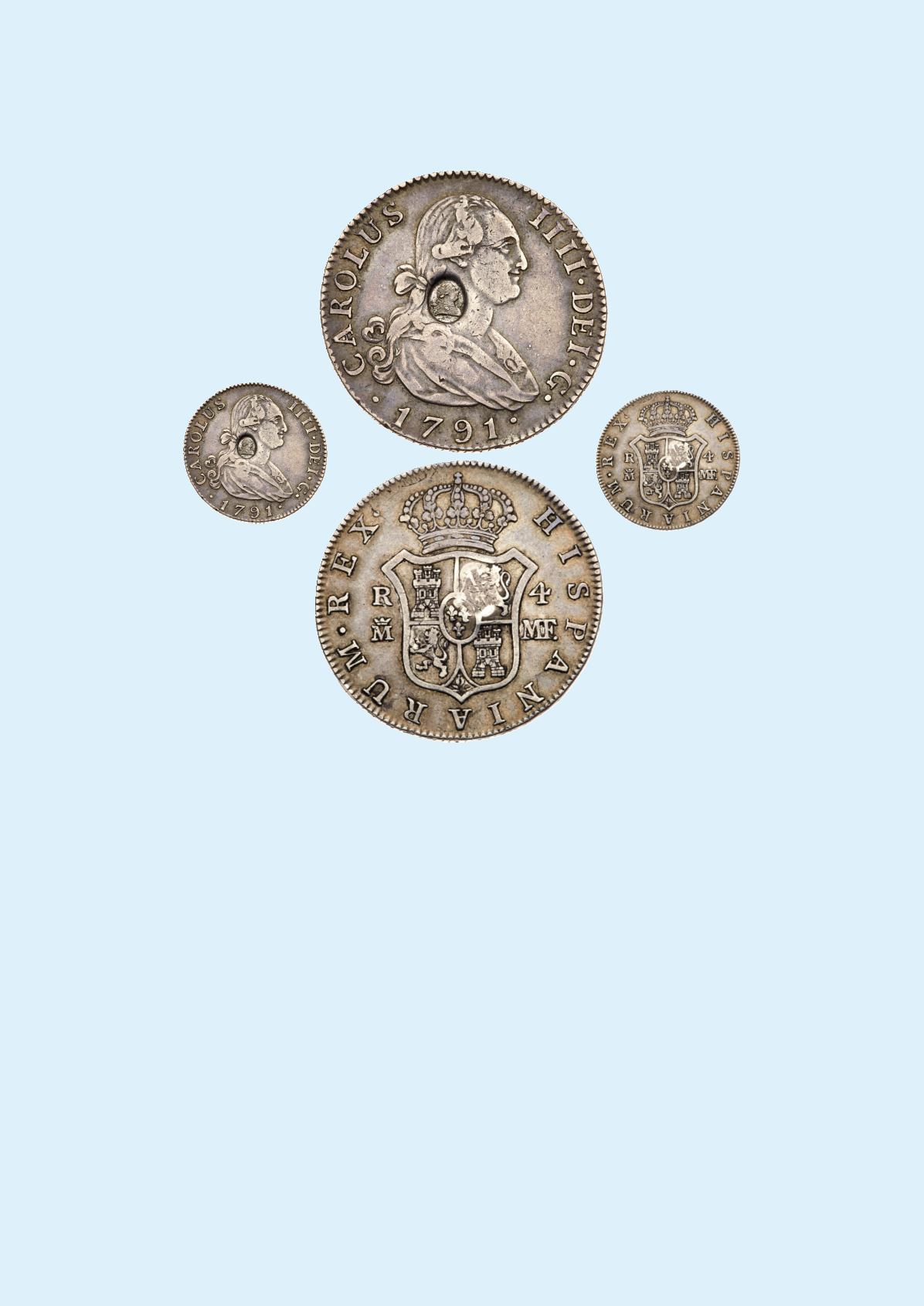

British Oval Countermark on a Madrid Four Reales
George III (1760-1820), oval countermark upon Spanish Four Reales of King Charles IIII (1788-1808),
1791 MF. Struck in Madrid, small oval hallmark of George III right at center of obverse, bust of Spanish
King laureate and draped right, date below, legend and toothed border surrounding, CAROLVS IIII. DEI.
G., Rev. crowned quartered shield of arms, R over crowned M to left, 4 over MF to right, legend surround-
ing, HISPANIARUM. REX (ESC 611; Bull 1875; S 3767;
cf.KM622.1). Toned, some light surface marks,
countermark extremely fine, host coin very fine, in PCGS holder graded VF 35.
$800
PCGS certification 34313096. Enough of the undertype of the Eight Reales is apparent to see that this is an 1803 dated Mexico
City Mint piece, when such details are visible it can only enhance the interest in such a proof striking. This coin ties for the high-
est graded example of this pattern (as labelled as of October 2017) on the NGC Census. The Bank of England Dollar was the
successor to the emergency countermarked coins that were struck in relation to a crisis with the silver coinage at the end of the
18th h Century, where the supply of silver in commerce and for the Mint had dwindled partly due to the Wars in France after the
Revolution in 1797, but mainly because the Mint was saddled with a maximum price they were allowed to pay for silver by a law
of 1601, which 175 plus years later was not adequate for purpose. Therefore, from March 1797 the Bank of England released
stocks of its Spanish dollars and halves each with an oval countermark. They did not really alleviate the problem of smaller change
and were issued on an off with the oval countermark, until a more complex larger octagonal mark replaced them from January
to May 1804, as the oval pieces were being counterfeited. Eventually the octagonal replacements were also copied widely and
the ultimate solution was to have the Soho Mint totally overstrike the remaining stocks of Spanish Dollars with a new Bank of
England design. This piece was one of the proposed pattern designs for this overstrike of the dollar that was not ultimately ad-
opted, and was a similar design to that just introduced on the gold Half-Guinea of 1804-13 and the later Military Guinea of 1813.



















